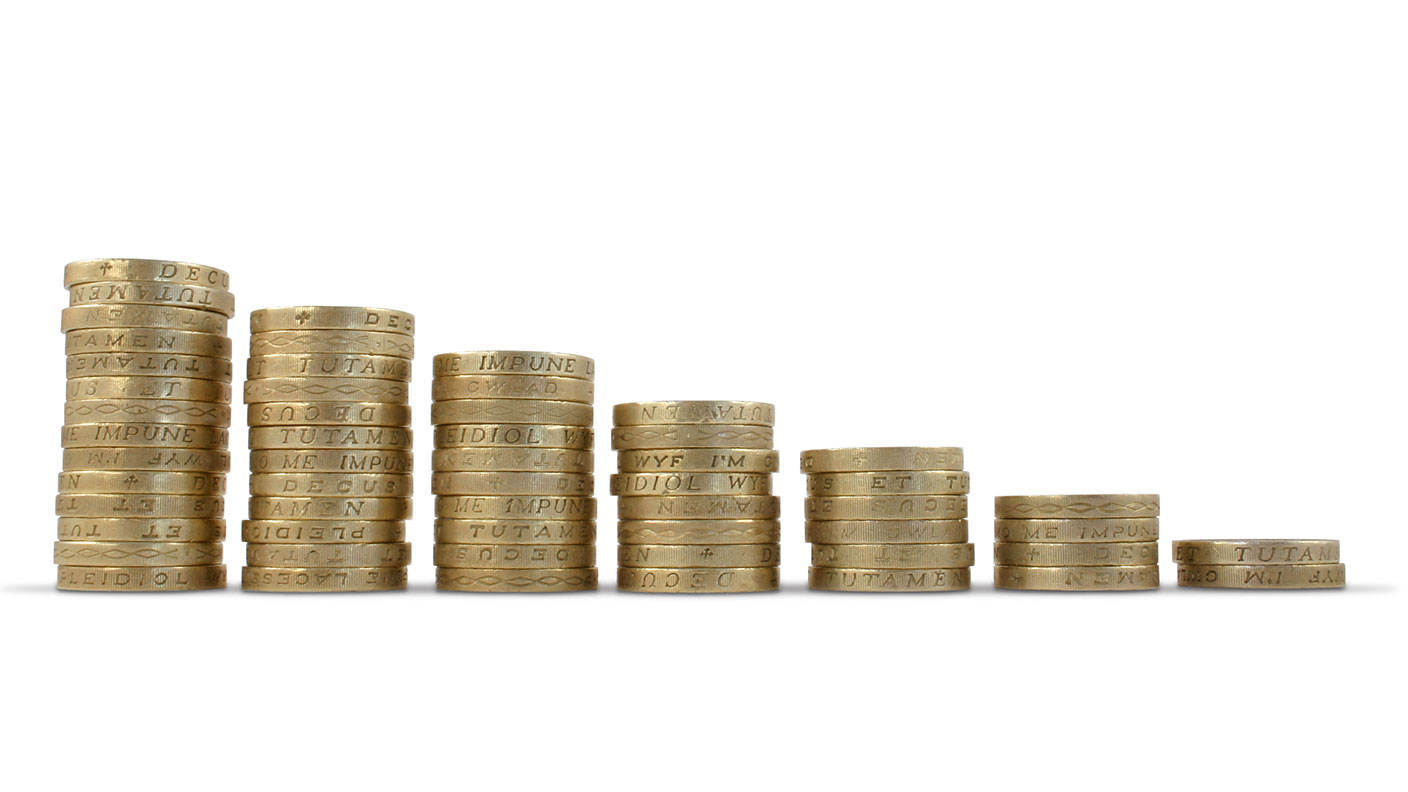Income investors: here’s what to do as dividends shrink
Dividends may never die, but they are certainly shrinking. And may not return to the levels we saw in the past. Merryn Somerset Webb explains what income investors should do.


“Who cares about earnings?” That was the headline on an article about valuing UK shares in The Statist magazine in December 1962.
The author, an anonymous “investment analyst of one of the large institutional funds”, was worried. Dividend payout ratios had been rising fast over a “few joyous years”, and the UK market was on an average yield of over 5% against 3.5% in the US.
Individual equities were being valued largely on their dividend payout and growth levels. Earnings growth was being ignored – such that “the effect on share prices of one unit of dividend paid out is much greater than that of one unit of retained earnings”, the author said.
MoneyWeek
Subscribe to MoneyWeek today and get your first six magazine issues absolutely FREE

Sign up to Money Morning
Don't miss the latest investment and personal finances news, market analysis, plus money-saving tips with our free twice-daily newsletter
Don't miss the latest investment and personal finances news, market analysis, plus money-saving tips with our free twice-daily newsletter
In the 13 years from 1951 to 1964, earnings in the FT index grew about 47% (roughly by inflation) and dividends by 170% – share prices rose 163%. If you are an income investor that might make sense to you (a bird in the hand being worth two in the bush), but it comes with problems.
Dividend cover is falling to dangerous levels
First, said our nervous analyst, fashion was changing. Analysts were more “cognisant of America where everyone (including the housewife) thinks in terms of price/earnings ratios and earnings per share.” The “sophisticated” were soon to do the same in the UK, something that might hit companies that were too focused on the short-term glory of providing a good income to their shareholders. But more important was the fact that dividend payout ratios had “in most cases reached a point beyond which directors are very wary of advancing”.
Dividend cover, the ratio of a company’s income to its dividend payout, had fallen from three times to below the two-times level generally considered to be safe. That meant earnings would now become an “inescapable determinant of dividend increases”. Only if they rose could dividends still rise. It was time, The Statist’s readers were told, for investors to stop fussing about dividend growth and start fussing about earnings growth.
How times don’t change. You could have made many of the same arguments in the UK last year. In 2019, 26 of the firms in the FTSE 100 were set to pay out dividends of over 6%. That would have been nice but for the fact that the index ended the year on an average cover of only 1.5 times.
Falling cover numbers weren’t just a thing in the UK, of course. Henderson International Income Trust (HINT) published a report earlier this month pointing out that not only had global cover fallen from 2.9 times in 2010 to 2.1 times in 2019 but, even pre-Covid-19, 20% of the world’s dividends were already at risk.
The fact that the UK’s dividend cover numbers were so awful in the first place has to be part of our miserable 2020 performance. The latest UK Dividend Monitor from Link Asset Services found that UK dividends fell by 57% in the second quarter. That’s worse than everywhere else except France. Three-quarters of companies that usually pay out just didn’t.
Another way to see the pain is through AJ Bell’s Dividend Dashboard. In January it pinpointed 25 FTSE 100 companies that had increased their dividend for ten years. There are now 14.
Dividends aren't dead yet
On to silver linings. The first is that Covid-19 has merely accelerated the inevitable: cuts were coming anyway. In most recessions companies try to cut dividends less than earnings fall (to make shareholders hate them less). This time, they’ve used the cover of coronavirus to do more.
That feels bad now, given how important dividends are: take them out of the FTSE 100’s ten-year return and it falls from 75% to a genuinely pathetic 20%. But if the virus has given managers the cover they need to restate dividends at a lower level – and to divert cash into desperately needed investment instead – that is good news.
Take Shell (which I hold). I bet its directors have been longing to cut the dividend but have been too scared of yield-hungry shareholders to do so. No wonder, then, that given a fig leaf they grabbed it to make their first cut since the Second World War.
Dividends are also not exactly dead. Decisions about them were taken at the height of pandemic panic, with an overlay of politics (note that half of the impact on dividends comes from the financial sector). As activity picks up we will find that the temporary halt has not fundamentally changed the long-term value of most companies. As the 1960s guru Lewis Whyte said, “the true worth of a company is the discounted value of the dividends over the period” plus whatever you get on realisation, so a consolidation that leads to lower dividends for longer is worth at least the same as one that frantically overpays in the short term at the expense of the long term.
What income investors should do
There are, however, portfolio implications from the disasters of the last few months. The first is to diversify. UK investors tend to be very keen on the FTSE 100 (which, by the way, still yields 3.5%). But there are opportunities elsewhere in the world (Japan is increasingly interesting as a high yielder) and in smaller firms. One example is Aim-listed Caretech, which might not be in a much-loved sector as a social care provider but yields a well-covered 2.8%.
If you are going for income, go everywhere for income. Can I give you a hint as to just how important are rising earnings in supporting rising dividends? The average total return from the 14 businesses on AJ Bell’s list over the past decade has been 481%. That from the FTSE 100 has been only 75%. Who cares about earnings? You do.
A second point is that if you really must have steady income from an investment, choose a trust that can hold income back in some years to distribute in tough times. HINT is using reserves this year and Alliance Trust (part of my portfolio) has announced it will too.
A third might be that cash is more acceptable than it was. In the old days a balanced income portfolio held a lump of government bonds. Unless you are happy making 0.2%, that is now pointless. But you also don’t want 100% equities in a volatile world.
Enter National Savings & Investment. Its Direct Saver account pays 1% and is 100% government backed. And if you want to know that your capital is protected while getting a hint of the adrenaline of the day trader, how about some premium bonds? The returns are random but the average return (which you won’t get) is an inflation-beating 1.4%. I “won” £50 last week. Which made me happy.
• This article was first published in the Financial Times
Get the latest financial news, insights and expert analysis from our award-winning MoneyWeek team, to help you understand what really matters when it comes to your finances.
Merryn Somerset Webb started her career in Tokyo at public broadcaster NHK before becoming a Japanese equity broker at what was then Warburgs. She went on to work at SBC and UBS without moving from her desk in Kamiyacho (it was the age of mergers).
After five years in Japan she returned to work in the UK at Paribas. This soon became BNP Paribas. Again, no desk move was required. On leaving the City, Merryn helped The Week magazine with its City pages before becoming the launch editor of MoneyWeek in 2000 and taking on columns first in the Sunday Times and then in 2009 in the Financial Times
Twenty years on, MoneyWeek is the best-selling financial magazine in the UK. Merryn was its Editor in Chief until 2022. She is now a senior columnist at Bloomberg and host of the Merryn Talks Money podcast - but still writes for Moneyweek monthly.
Merryn is also is a non executive director of two investment trusts – BlackRock Throgmorton, and the Murray Income Investment Trust.
-
 MoneyWeek news quiz: How much can you win in Premium Bonds?
MoneyWeek news quiz: How much can you win in Premium Bonds?Quiz Premium Bonds, ChatGPT, and the start of the festive season all made headlines this week. How closely were you following the news?
-
 Salary sacrifice pensions cap: 3.3 million workers to be hit by contribution limits
Salary sacrifice pensions cap: 3.3 million workers to be hit by contribution limitsThe government has revealed further details of its controversial cap on pension contributions through salary sacrifice. Here is how the changes could affect you
-
 What's behind the big shift in Japanese government bonds?
What's behind the big shift in Japanese government bonds?Rising long-term Japanese government bond yields point to growing nervousness about the future – and not just inflation
-
 Halifax: House price slump continues as prices slide for the sixth consecutive month
Halifax: House price slump continues as prices slide for the sixth consecutive monthUK house prices fell again in September as buyers returned, but the slowdown was not as fast as anticipated, latest Halifax data shows. Where are house prices falling the most?
-
 Rents hit a record high - but is the opportunity for buy-to-let investors still strong?
Rents hit a record high - but is the opportunity for buy-to-let investors still strong?UK rent prices have hit a record high with the average hitting over £1,200 a month says Rightmove. Are there still opportunities in buy-to-let?
-
 Pension savers turn to gold investments
Pension savers turn to gold investmentsInvestors are racing to buy gold to protect their pensions from a stock market correction and high inflation, experts say
-
 Where to find the best returns from student accommodation
Where to find the best returns from student accommodationStudent accommodation can be a lucrative investment if you know where to look.
-
 The world’s best bargain stocks
The world’s best bargain stocksSearching for bargain stocks with Alec Cutler of the Orbis Global Balanced Fund, who tells Andrew Van Sickle which sectors are being overlooked.
-
 Revealed: the cheapest cities to own a home in Britain
Revealed: the cheapest cities to own a home in BritainNew research reveals the cheapest cities to own a home, taking account of mortgage payments, utility bills and council tax
-
 UK recession: How to protect your portfolio
UK recession: How to protect your portfolioAs the UK recession is confirmed, we look at ways to protect your wealth.
